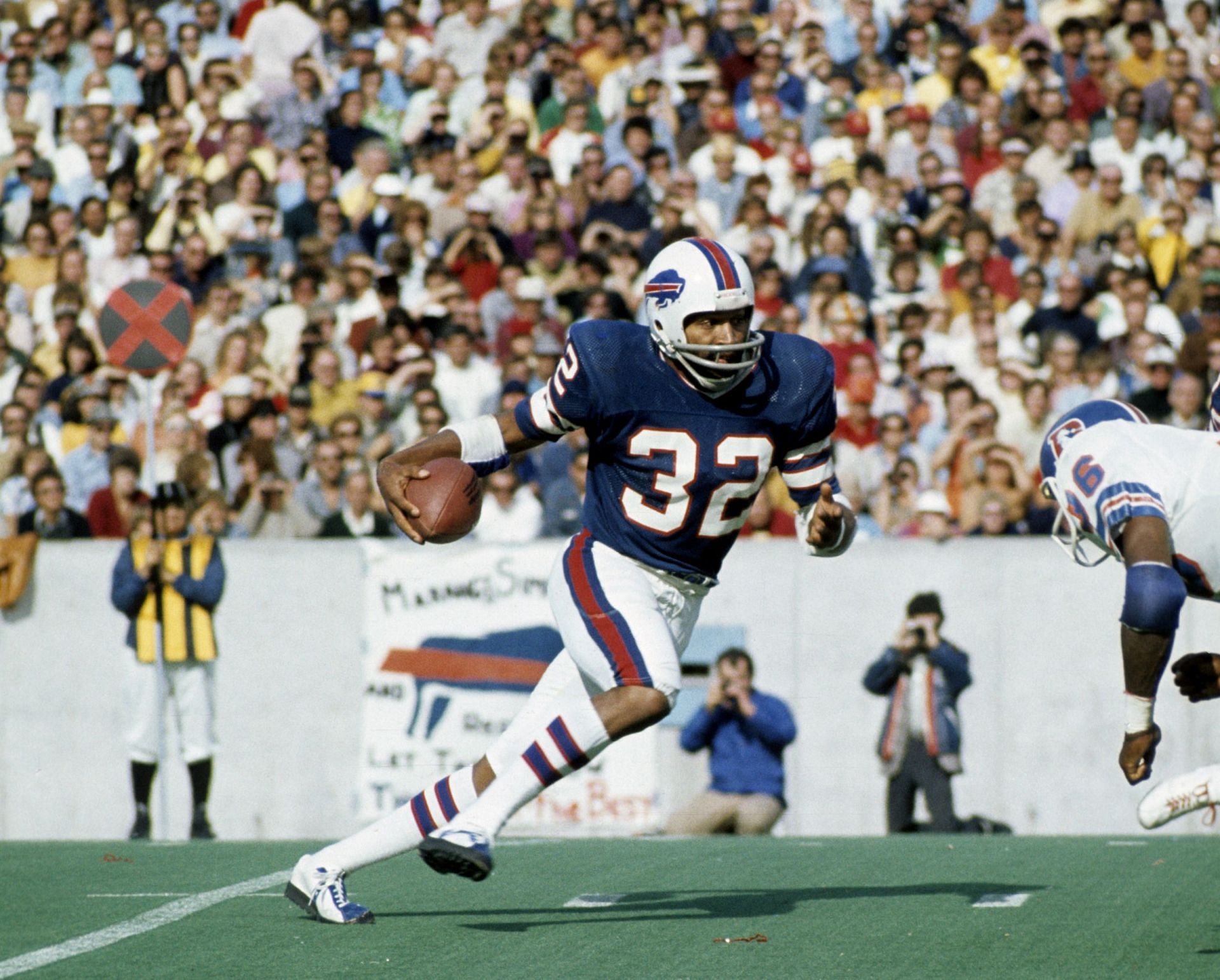
NFL Countdown: Bills select O.J. Simpson with the first overall pick in1969 Draft

There was a time when O.J. Simpson was known only for his abilities on the football field. Well that, and the Naked Gun movie franchise. His actions post retirement have overshadowed his NFL career to such an extent that most modern fans are oblivious to his achievements on the football field.
Fondly referred to as "Juice," he is still regarded by some historians as the greatest running back in both NCAA and NFL history. The Buffalo Bills selected the former University of Southern California superstar with the first overall pick of the 1969 Draft. But even before that, Simpson was the most famous player on the planet.
O.J. "Juice" Simpson raised the bar in college football
Due to poor high school grades, Simpson was not heavily recruited and had to spend a year in junior college. He chose San Francisco City College. During his only season, he made the Junior College All-American team as a running back after also taking the field as a defensive back.
His JuCo performances soon caught the eye of Division I colleges, and he was heavily recruited that summer. Eventually, he decided to transfer to USC. His impact was immediate, and in his first year in California he finished 2nd in voting for the Heisman trophy. He also led USC to a national championship.
The legend of his college career was built on the back of some of the most iconic plays in NCAA history, occurring in some of its greatest games. His 64-yard touchdown run against UCLA in the Victory Bell game is one such example.
The running back followed up his championship winning season by collecting the Heisman trophy the following year. It was the biggest voting landslide in the award's esteemed history. He declared for the 1969 draft immediately following the conclusion of the '68 college season. He left USC after just two years where he racked up 3,423 rushing yards and 36 touchdowns.
Such was his level of fame, he was able to hold the Bills to ransom prior to the draft. He demanded a $650,000, five-year deal, the largest in sports history at the time. He threatened to pursue a career in acting if the Bills failed to meet his demands. Needless to say, the Bills complied, and Simpson was heading for Buffalo with high expectations.
Early struggles before a coaching change re-ignites Simpson's career
Naturally, when you have just drafted the best running back in NCAA history, you immediately assign him mostly blocking duties, or use him as a receiver. Well, that's exactly the tactic the Bills head coach, John Rauch, chose to employ, leading to a grand total of seven wins in two years.
With Rauch relieved of his duties, Lou Saban arrived in 1972. Simpson now featured in an offense built around his considerable talents. He led the league in rushing that season. This was nothing compared to what followed the next campaign, as he became the first player in history to break the 2,000-yard rushing mark.
For his efforts in 1973, he was also named MVP and OPTY. To this day, only seven other players have ever broken through the 2,000-yard barrier. Most recently Derrick Henry of the Tennessee Titans in 2020.
All seven of those players achieved the milestone in a sixteen-game regular season. Simpson compiled his 2,000-yards in just fourteen games. His 143.1 ypg that season was far greater than anything achieved by the other seven members of the 2,000 club. His 6.0 ypc was only bettered by Eric Dickerson's 6.1 ypc in 1984.
He would rush for over a thousand yards in five consecutive seasons, including 1975 were he gained over 1,800 rushing yards with sixteen touchdowns. He also managed to add nearly 500 receiving yards and seven further touchdowns as he developed into a duel-threat back.
1977 would see Simpson exhibit the first signs of wear and tear as injuries began to take their toll. A move to the San Francisco 49ers did little to reignite the once unstoppable backfield superstar, and he called time on his glittering career following the 1979 season.
Upon retirement, he ranked second on the all-time list for NFL rushing yards. Now forty-two years later, he sits outside the top-20. He was named to the NFL 75th and 100th anniversary teams, and has been inducted into the football Hall of Fame.
What happened to O.J. Simpson after leaving the NFL is well documented, for some this should invalidate all his on-field achievements, while others will argue that they should be treated separately. That argument will most likely never be settled.